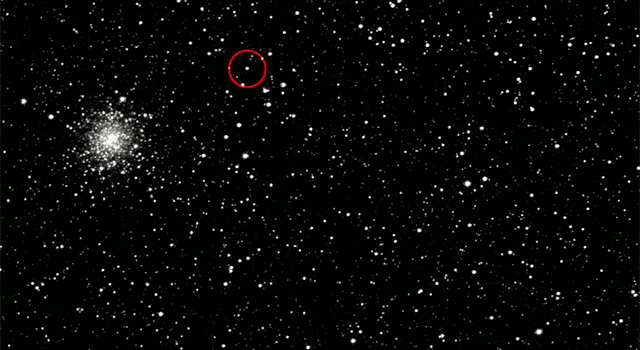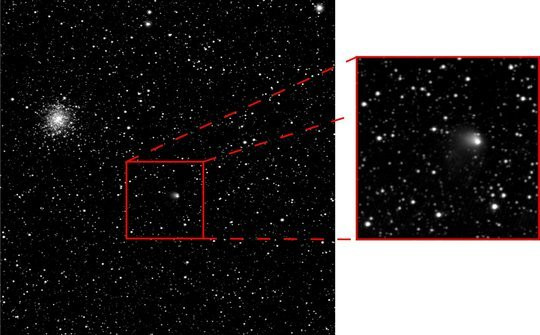Space: Rosetta Spacecraft Captures Images of 'Dust Veiled' Comet it Plans to Land on

The European Space Agency's Rosetta spacecraft has captured a sequence of incredible images of the comet it intends to land on later this year.
As the spacecraft closed in on comet 67P/Churyumov-Gerasimenko, it was able to capture the "dusty veil", otherwise known as a coma, around the small, icy body.
The images were taken by Rosetta's OSIRIS scientific imaging system, between 24 March and 4 May, as the gap between craft and comet closed to around 1.2 million miles (2 million kilometers). By the end of the sequence, the comet's coma - the nebulous envelope around the nucleus of a comet - extends about 800m (1,300km) into space.
Comet 67P/Churyumov-Gerasimenko's coma has developed as a result of the comet moving progressively closer to the sun along its 6.5-year orbit.

Even though it is still more than 373 million miles (600 million kilometers) from the sun, its surface has already started to warm, causing its surface ices to sublimate and gas to escape from its rock-ice nucleus.
"67P is beginning to look like a real comet," Holger Sierks, the principal investigator for OSIRIS at the Max Planck Institute for Solar System Research in Germany, told NBC News.
The escaping gas also contains a cloud of tiny dust particles, which gradually expand to create the coma. The comet activity rises and warms as it gets closer to the sun and eventually, pressure from the solar wind will eventually cause some of the material to stream out into a long tail.
As reported by the Space Reporter, Rosetta will land a robotic probe known as Philae on the comet's surface this November. It will be a first for space exploration, as the first probe on any comet.
In addition to flying into the comet's dusty veil, Rosetta will land a robotic probe known as Philae on the comet's surface in November, the first landing by any probe on a comet.
Although Rosetta was launched in 2004, the voyage has taken a decade because the spacecraft needed several gravity assists, which were obtained during fly-bys of Earth and Mars. According to Space.com, Rosetta was put in a "deep sleep" in July 2011, before it was awoken in January this year.
The images of the comet "waking up" have also helped researchers determine the rotation period of the celestial object. 67P/Churyumov-Gerasimenko spins around once every 12.4 hours, which is roughly 20 minutes less than originally thought.
"It's truly great to see these images and witness the beginning of the comet's active phase," Ian Wright, Professor of Planetary Sciences at The Open University told Gizmag.com. "The Ptolemy instrument team can't wait to get down on the surface and start making measurements on the body of the comet itself."
ESA member states and NASA contributed to the Rosetta mission.
© Copyright IBTimes 2025. All rights reserved.






















